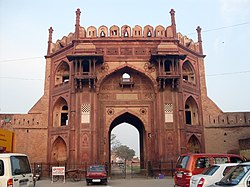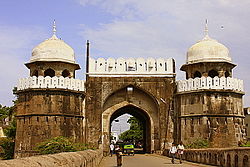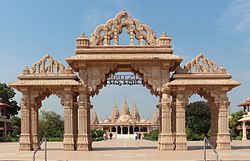India Gate, Delhi
Gateway of India, Mumbai
Buland Darwaza, Fatehpur Sikri
Great gate (Darwaza-i Rauza), the main entrance to Taj Mahal, Agra
Red Fort Entry Gate, Delhi
Nurmahal Sarai Gateway, Punjab
Zafar Gate, Mehrauli, Delhi
Entrance Gate of Taj-ul-Masajid, Bhopal
Gateway into Arab Sarai, near Humayun's tomb complex, Delhi
Main Gateway to Safdurjang Tomb, Delhi
Sabhyata Gate, Patna
Ganesh Pol Entrance, Amer Fort, Jaipur
Lahori Gate, the main entrance to the Red Fort, Delhi
Entrance to Humayuns Tomb, Delhi
Alai Darwaza, Delhi
Ajmeri Gate, Delhi
Entrance Eastern Façade of Junagarh Fort, Bikaner
Makai Gate, Aurangabad
The massive gate of Kumbhalgarh fort, called the Ram Pol
Entrance Gate from Interior Itmad-ud-Daula, Agra
Gate to Gulab Bari, Faizabad
Entrance of Akbar's Tomb, Agra
Jama Masjid Gate, Delhi
Jama Masjid Gate Inside, Delhi
Jamali Kamali Entrance, Mehrauli, Delhi
Entrance to Bibi-Ka-Maqbara, Aurangabad
Ratlami Gate, Jaora
Alamgir Darwaza, Mandu
Gadi Darwaza, Mandu
East Toran, Sanchi
North Toran, Sanchi
Shahji Temple Gate, Vrindavan
Akshardwar, Bhavnagar
Sayajirao Palace Gate, Vadodara
Teen Darwaza, Dhoraji
Gopuram, Meenakshiamman Temple
Gopuram, Sri Veera Vijaya Anjaneya Swami Temple, Paradarami
Gopuram, Thirumarperu, Tirumalpur
Gateway to Bidar fort
Daria Daulat Bagh Gate, Srirangapatna
Vittala Temple Gate, Hampi









































